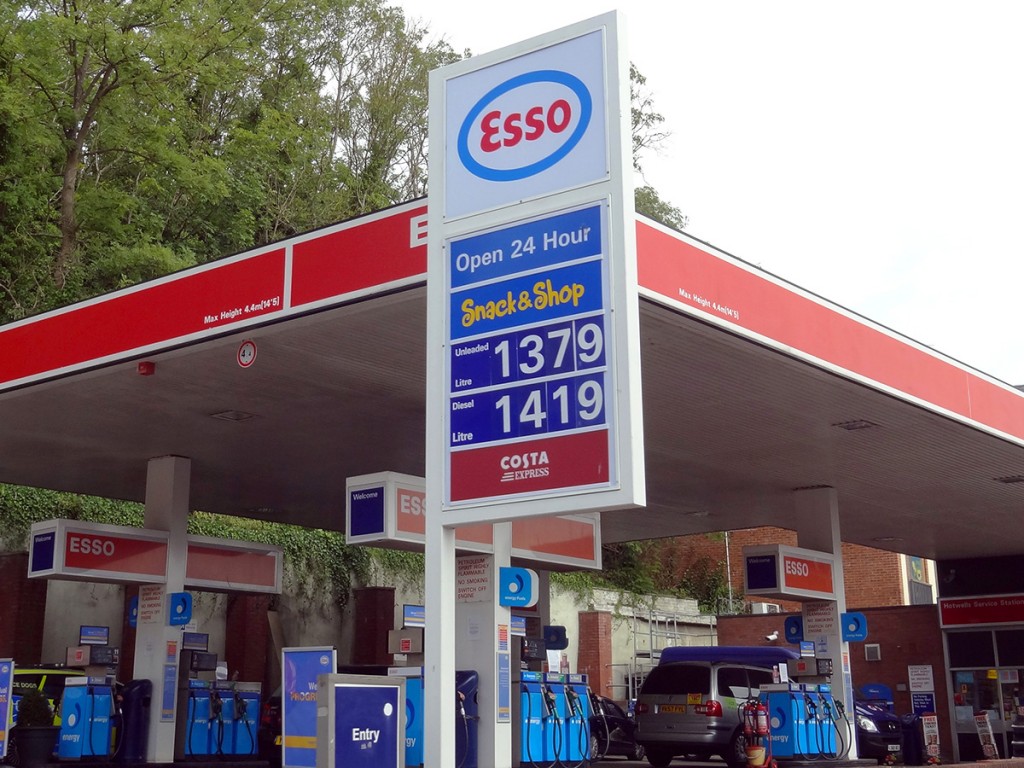 The model of demand and supply is one of the first diagrams that any student of Economics will see and it’s a very important model. We can apply it to a multitude of markets and understand how market prices for products and services are determined. One such market is that of wine, where a recent report suggests that wine is in short supply. Bad news for everyone!
The model of demand and supply is one of the first diagrams that any student of Economics will see and it’s a very important model. We can apply it to a multitude of markets and understand how market prices for products and services are determined. One such market is that of wine, where a recent report suggests that wine is in short supply. Bad news for everyone!
The price of wine is set by the interact of demand and supply. As with any market, numerous factors will affect how much wine is demanded at any price. Since 1996, global consumption of wine has been on the increase: for many, wine is a luxury good and thus as income rises, so does consumption. With the emergence of markets, such as China and subsequent income growth, consumption has risen. Furthermore, tastes have changed such that wine is becoming an increasingly desirable drink. So, this has all led to the demand curve shifting to the right.
 However, at the same time, the supply of wine has been falling, largely the result of ‘ongoing vine pull and poor weather’ across Europe. European production has fallen by around 10% over the past year and although production in other countries has been rising, overall production is still not sufficient to match the growth in demand.
However, at the same time, the supply of wine has been falling, largely the result of ‘ongoing vine pull and poor weather’ across Europe. European production has fallen by around 10% over the past year and although production in other countries has been rising, overall production is still not sufficient to match the growth in demand.
So, what’s the result of this high growth in demand combined with the decline in supply? A shortage of wine. A report by analysts at Morgan Stanley suggests that the global wine shortage was some 300m cases in 2012. But, more importantly what is the effect of this shortage? When demand for a product exceeds the supply, the market mechanism will push up the price. As stocks of wine continue to be depleted and consumption of wine keeps rising, the only outcome is a rise in the price of a bottle and a crate of wine.
Concerns are also being raised about the future of prices of some of our other favourite luxury products, such as chocolate, goats cheese and olives. In each case, it’s all about demand and supply and how these curves interact with each other. The following articles consider the prices of some of these products.
Wine shortage: the top five wines to drink – before they run out The Telegraph, Susy Atkins (30/10/13)
World faces global wine shortage – report BBC News (30/10/13)
Luxury food shortage scares – should we believe the warnings? The Guardian, Emine Saner (5/11/13)
The global wine ‘shortage’ Napa Valley, Dan Berger (8/11/13)
Global Shortage of wine beckons Independent, Felicitiy Morse (30/10/13)
The global wine shortage is about to get worse (if you like Bordeaux) TIME World, David Stout (6/11/13)
Have no fears about a world wine shortage – the glass is still half fulll The Telegraph, Victoria Moore (31/10/13)
Drink it while you can, as study points to looming wine shortage Associated Press (31/10/13)
Don’t waste a drop! Wine prices to rise as demand grows Mail Online, Amie Keeley (31/10/13)
Questions
- Use a demand and supply diagram to illustrate how the market price for wine (or any other product) is determined.
- Why does the demand curve for wine slope downwards and the supply curve of wine slope upwards?
- Which factors will affect (a) the demand and (b) the supply of wine?
- One the diagram you drew in question, illustrate a shortage of wine. How will the price mechanism work to restore equilibrium?
- Why does the Morgan Stanley report suggest that a wine shortage might emerge?
- What suggestions are there that there is no wine shortage?
 A simple model in economics is that of demand and supply. Through the price mechanism, signals are sent between consumers and producers and this interaction results in an equilibrium market price and quantity. However, what happens when the market for a good or service is in disequilibrium?
A simple model in economics is that of demand and supply. Through the price mechanism, signals are sent between consumers and producers and this interaction results in an equilibrium market price and quantity. However, what happens when the market for a good or service is in disequilibrium?
When a market is in equilibrium, demand equals supply. However, as we discussed in a previous blog concerning baby milk in China (see Milking the economy), markets are not always in equilibrium. If demand exceeds supply, a shortage will emerge and to eliminate this, the price must rise. If, on the other hand, supply exceeds demand, there will be an excess supply and thus the price must fall to restore equilibrium.
The market in question here is toilet paper in Venezuela! A severe shortage of this product has emerged in recent months, with shops running out of supplies. In a bid to relieve this shortage, the country’s Minister of Commerce has received approval for a $79 million credit, which can be used to import this basic product in short supply. Fifty million rolls will be imported to help fill the shortage that has emerged. The shortage is not just a problem for toilet paper, but also across a range of basic consumer goods. The article from Reuters comments that:
The government says the toilet paper shortages, like others, are the results of panicked buying and unscrupulous merchants hoarding the goods to artificially inflate prices.
Opposition critics say the problem is caused by the currency controls, created a decade ago by late socialist leader Hugo Chavez, and years of nationalizations that weakened private industry and left businesses unwilling to invest.
With shortages across a variety of products, the President has begun to work closely with business leaders to address this situation. The following articles consider this basic market, the intervention and consequences.
Venezuela hopes to wipe out toilet paper shortage by importing 50m rolls The Guardian (16/5/13)
Venezuela ends toilet paper shortage BBC News (22/5/13)
With even toilet paper scarce, Venezuelan president warms to business Reuters, Eyanir Chinea (22/5/13)
Toilet paper shortage in Venezuela to end after lawmakers back plans to import 39 million rolls Huffington Post, Sara Nelson (22/5/13)
Venezuela’s toilet paper shortage ended; 3 other basic goods that went scarce in the country International Business Times, Patricia Rey Mallen (22/5/13)
Questions
- Using a demand and supply diagram, explain how equilibrium is determined in a free market.
- Illustrate the shortage described in the aticles on your above demand and supply diagram. How should the price mechanism adjust?
- What types of government intervention have led to the shortages of such basic consumer goods?
- How have currency controls created a problem for Venezuela?
- With an increase in imported products, what impact might there be on Venezuela’s exchange rate and on its balance of payments?
 As resources become scarce, the price mechanism works to push up the price (see, for example, Box 9.11 in Economics 8th ed). If you look at the price of petrol over the past few decades, there has been a general upward trend – part of this is due to growth in demand, but part is due to oil being a scarce resource. Many millions have been spent on trying to find alternative fuels and perhaps things are now looking up!
As resources become scarce, the price mechanism works to push up the price (see, for example, Box 9.11 in Economics 8th ed). If you look at the price of petrol over the past few decades, there has been a general upward trend – part of this is due to growth in demand, but part is due to oil being a scarce resource. Many millions have been spent on trying to find alternative fuels and perhaps things are now looking up!
Air Fuel Synthesis, a small British company, has allegedly managed to make ‘petrol from air’. Following this, the company has unsurprisingly received finance and investment offers from across the world. However, the entrepreneur Professor Marmont has said that he does not want any company from the oil industry to get a stake in this firm. This doesn’t mean that investment is not needed or on the cards, as in order to increase production of petrol from thin air financing is needed. Professors Marmont said:
We’ve had calls offering us money from all over the world. We’ve never had that before. We’ve made the first petrol with our demonstration plant but the next stage is to build a bigger plant capable of producing 1 tonne of petrol a day, which means we need between £5m and £6m
Whilst the process appears to be a reality, Air Fuel Synthesis is a long way from being able to produce en masse. However, it does offer an exciting prospect for the future of petrol and renewable energy resources in the UK. At the moment oil companies appear to be uninterested, but if this breakthrough receives the financing it needs and progress continues to be made, it will be interesting to see how the big oil companies respond. The following articles consider this break-through.
Company that made ‘petrol from air’ breakthrough would refuse investment from big oil Independent, Steve Connor (19/10/12)
British engineers create petrol from air and water Reuters, Alice Baghdijan (19/10/12)
Petrol from air: will it make a difference? BBC News, Jason Palmer (19/10/12)
British engineers produce amazing ‘petrol from air’ technology The Telegraph , Andrew Hough (18/10/12)
Questions
- Explain the way in which the price mechanism works as resources become scarce. Use a diagram to help your explanation.
- As raw materials become scarce, prices of the goods that use them to work or require them to be produced will be affected. Explain this interdependence between markets.
- Why is investment from an oil company such a concern for Professor Marmont?
- Why is there unlikely to be any impact in the short run from this new breakthrough?
- If such a technology could be put into practice, what effect might this have on the price of petrol?
- How might oil companies react to the growth in this technology?
Oil affects our everyday lives. Whether it’s to heat your house, to run your car or to work out production costs, the price of oil is important. Commodity prices are determined by the interaction of demand and supply and oil prices are no different. As demand and supply for products and for oil itself change, so will the price of oil. However, any changes in the price of this valuable commodity will also have effects on macroeconomic variables, such as inflation. From a high of $147 (£90) per barrel in July 2008, it fell to $30 by the end of the year. But since then it doubled to reach $60 by May and has been around the $70 mark since.
How have these fluctuations affected the economy? Should more be invested in extraction? Extracting oil is an expensive process and requires huge investment, which is problematic given the current recession and various funding issues. The following articles consider this problem, as well as the impact it is likely to have on our economic recovery.
Total issues oil shortage warning BBC News (21/9/09)
Crude price ‘shock’ is next threat to recovery The Independent (22/9/09)
Oil prices slide on demand fears BBC News (21/9/09)
Pound drops as UK stocks fall for first time in seven days Oil-price.net (22/9/09)
Oil prices tumble amid worries over weak demand Channel News Asia (22/9/09)
Oil price touches high for 2009 BBC News (21/8/09)
FTSE soars over surge in oil prices The Press Association (21/9/09)
Oil price data can be found at:
Brent Spot Price (monthly) Energy Information Administration.
Note: you can select daily, weekly, monthly or annual data, and data for other oil markets too. Data can be downloaded to Excel.
Questions
- How is the price of oil determined? Why is it so volatile? How is price elasticity of demand relevant to your answer?
- Over the coming ten years, which factors are likely to affect (a) demand for oil (b) supply of oil?
- Explain whether the price of oil is likely to rise faster or less fast than general prices.
- How do changes in the price of oil affect the government’s macroeconomic objectives and its policy decisions?
- Explain why the price of oil is such an important consideration for firms
 The model of demand and supply is one of the first diagrams that any student of Economics will see and it’s a very important model. We can apply it to a multitude of markets and understand how market prices for products and services are determined. One such market is that of wine, where a recent report suggests that wine is in short supply. Bad news for everyone!
The model of demand and supply is one of the first diagrams that any student of Economics will see and it’s a very important model. We can apply it to a multitude of markets and understand how market prices for products and services are determined. One such market is that of wine, where a recent report suggests that wine is in short supply. Bad news for everyone! However, at the same time, the supply of wine has been falling, largely the result of ‘ongoing vine pull and poor weather’ across Europe. European production has fallen by around 10% over the past year and although production in other countries has been rising, overall production is still not sufficient to match the growth in demand.
However, at the same time, the supply of wine has been falling, largely the result of ‘ongoing vine pull and poor weather’ across Europe. European production has fallen by around 10% over the past year and although production in other countries has been rising, overall production is still not sufficient to match the growth in demand.

